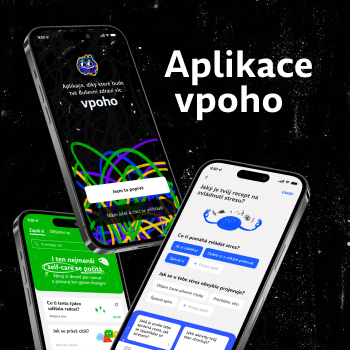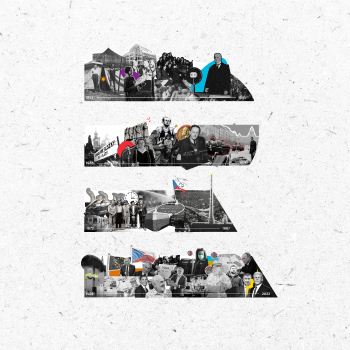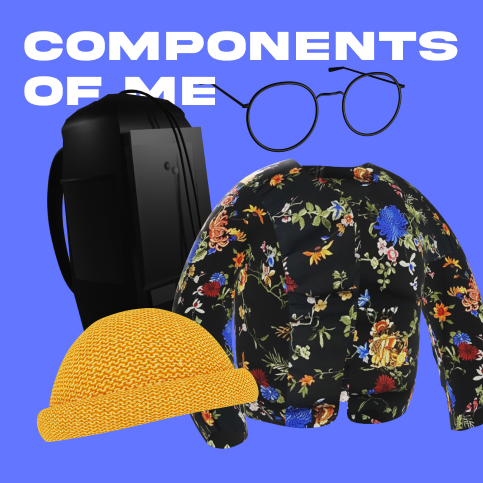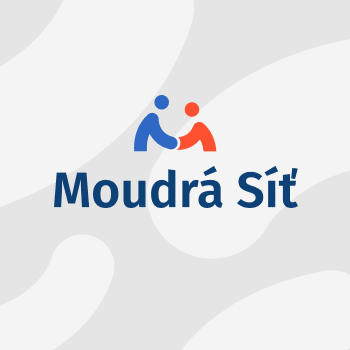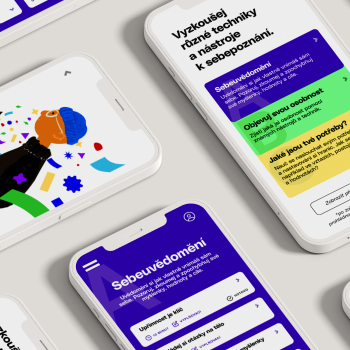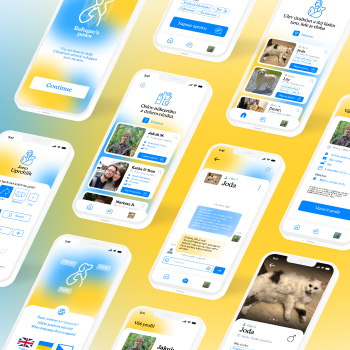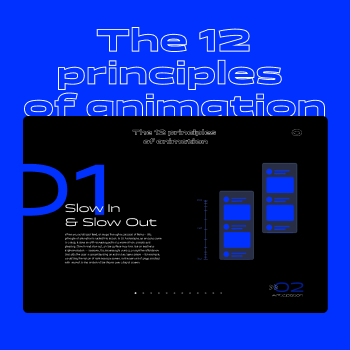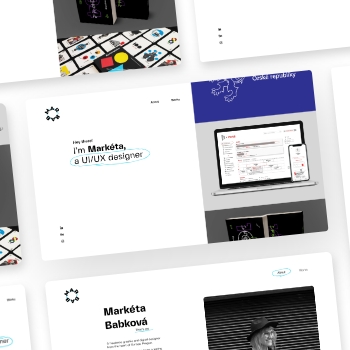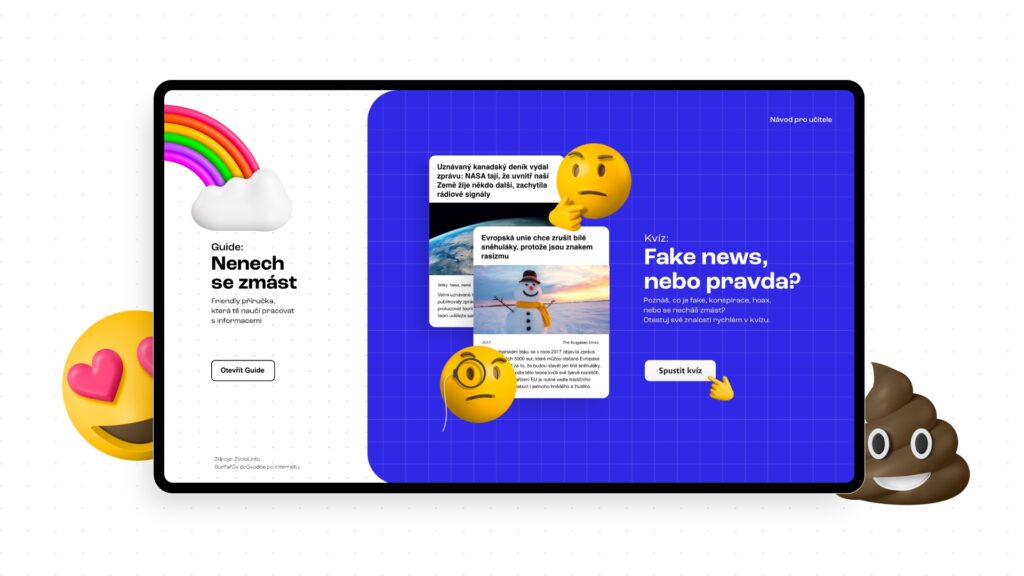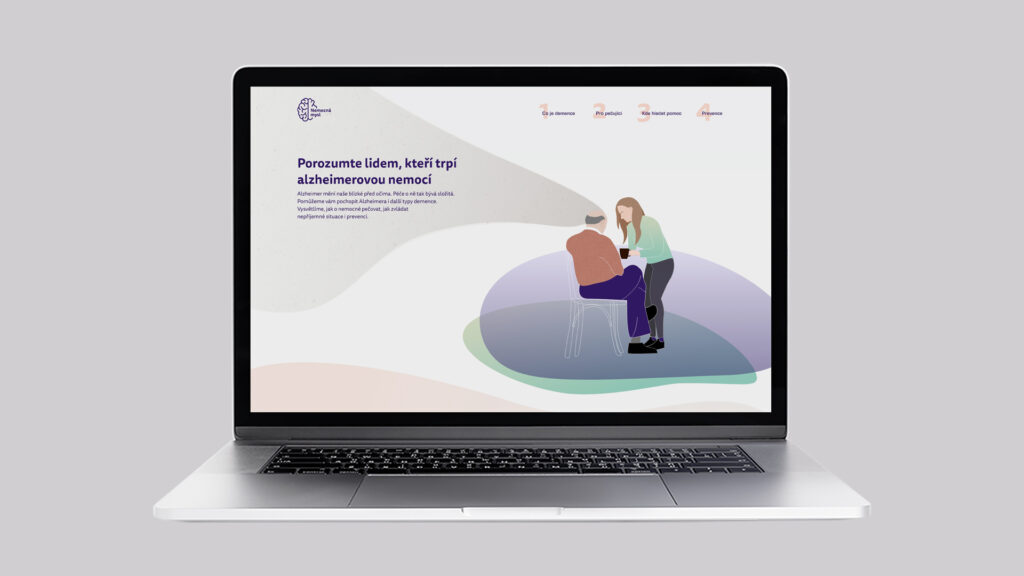My aim was to create a playful quiz and a clear guide to media education lessons, which aims to help teachers to enliven the lessons in a more entertaining way than a normal lesson and to make it easier for students to understand how to work with information on the Internet and asses its credibility.
The quiz contains as wide a sample of different articles as possible, a total of ten examples (ranging notoriously known conspiracy theories, hoaxes and suspicious headlines, to truthful and objective news articles), and the task of students is to assess whether the information presented to them is serious or whether they feel that is manipulative. Subsequently, the hráči players ’find out organically whether their estimate was good or whether they were fooled.
Directly below the result at the bottom of the page, the user will see an analysis of the article, with possible sources and links. Thus, the user/student comes into contact with the given issue at that moment, which he/she will then discuss with the teacher in class.
The light part of the website, called the „Guide“ is a friendly guide that aims to teach students how to work with information. In this guide, I have processed available materials from Zvolsi.info, specifically the Surfer’s Guide to the Internet, which I designed to be visually appealing and easy for students to remember.
The guide can be used by students together with the teacher as an aid during the quiz or after the quiz has been completed (for example, as part of a class discussion or as self-study “at home”).
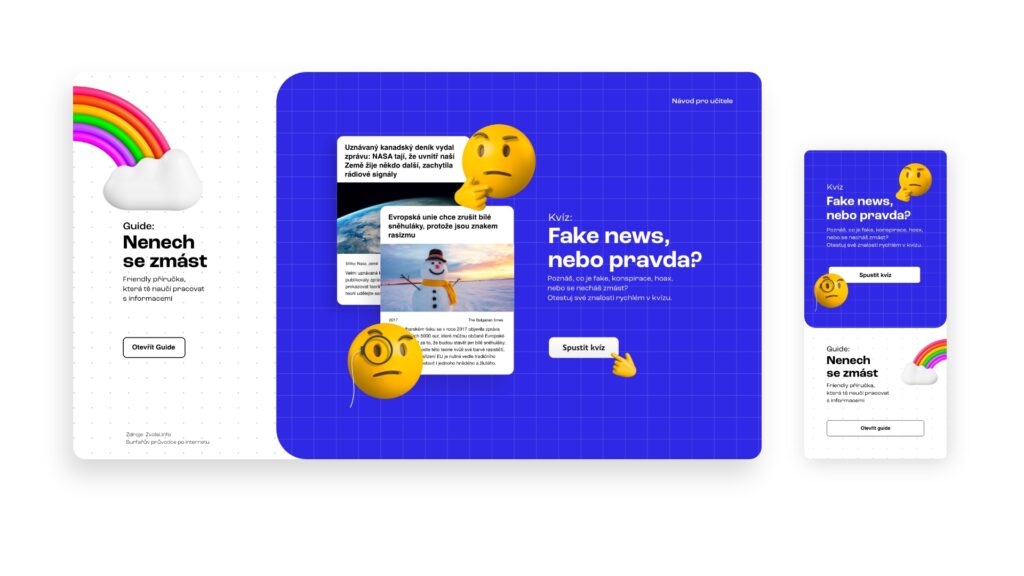
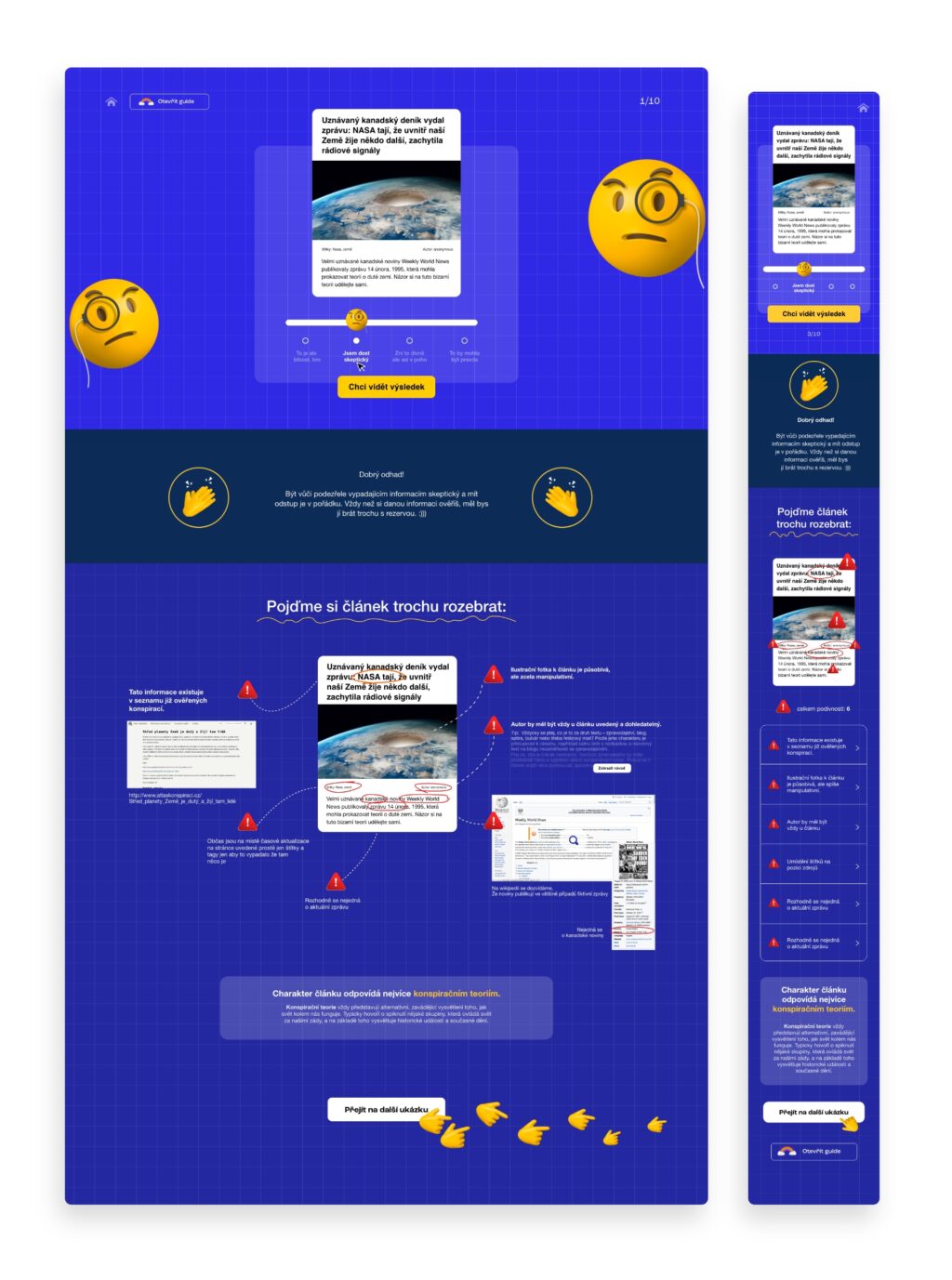
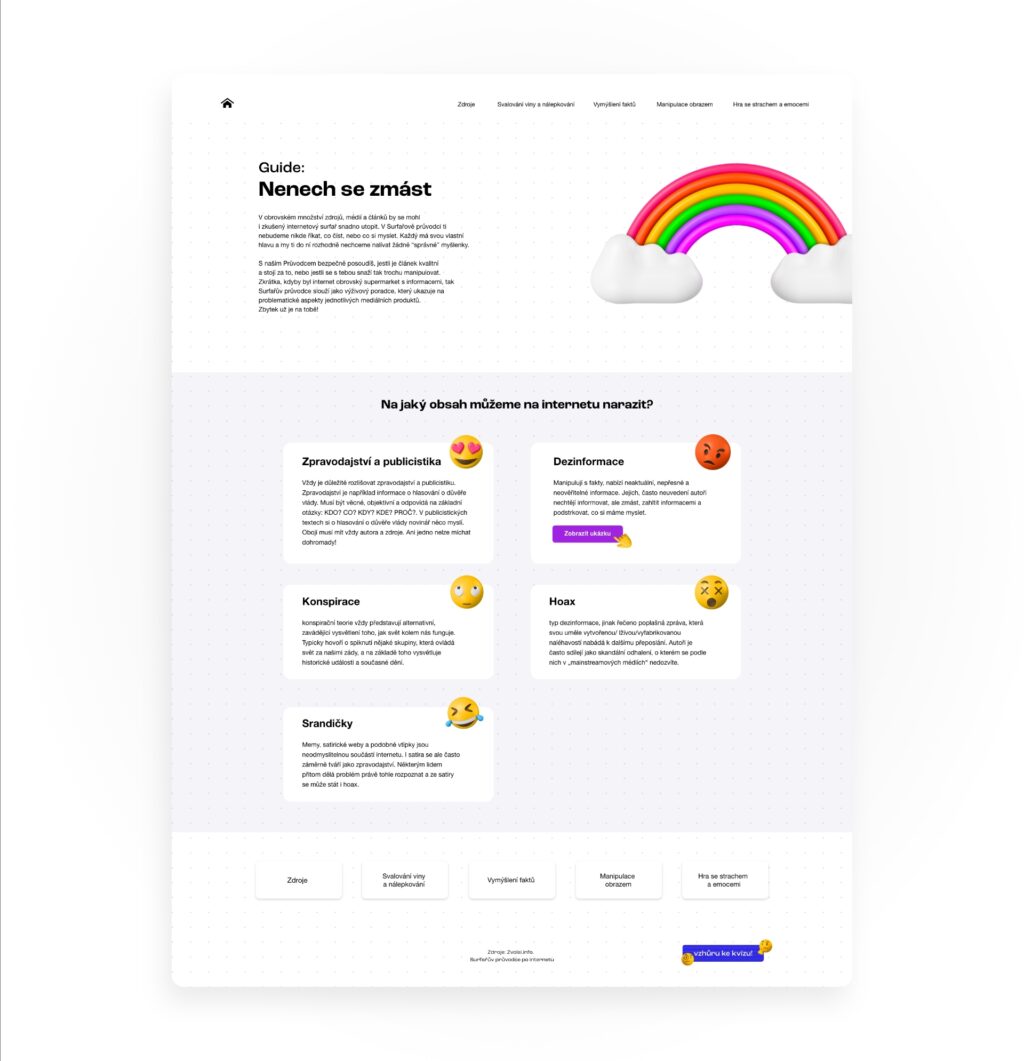
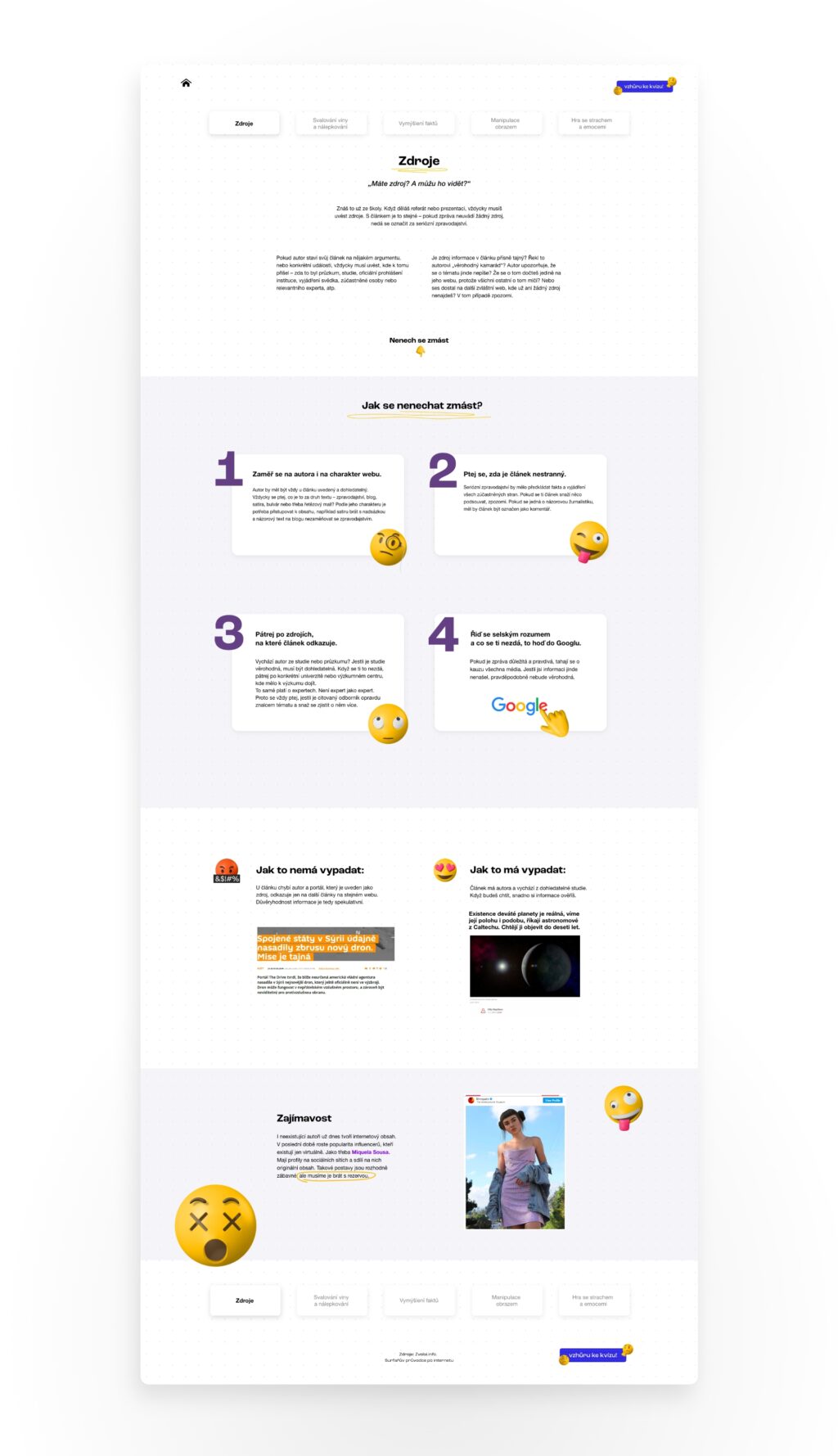
All 3D emoji that I use in the project are licensed and their author is Wannathis: https://emoji.wannathis.one/
